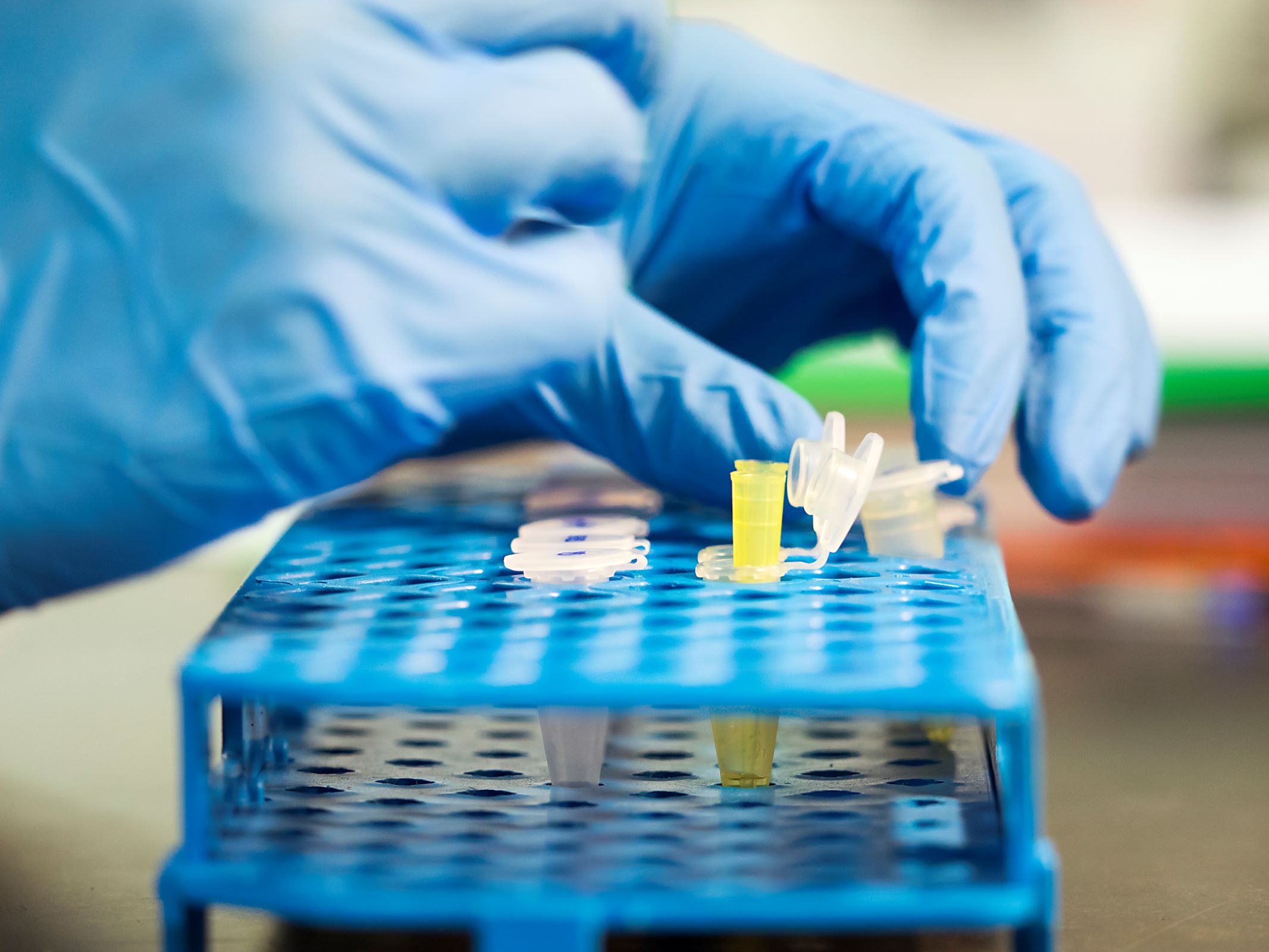

Articles
How To Store Dna Samples
Modified: January 9, 2024
Learn effective techniques for storing DNA samples in this comprehensive collection of articles. Discover best practices and ensure sample integrity for future analysis.
(Many of the links in this article redirect to a specific reviewed product. Your purchase of these products through affiliate links helps to generate commission for Storables.com, at no extra cost. Learn more)
Introduction
DNA, or Deoxyribonucleic Acid, is the building blocks of life. It carries the genetic information that determines the characteristics and traits of all living organisms. The ability to store and preserve DNA samples is crucial for various fields such as medical research, forensics, and genetic testing.
Proper storage of DNA samples is essential to maintain their integrity and stability over time. Failure to do so can result in degradation, contamination, or loss of the samples, rendering them useless for future analysis and research purposes.
In this article, we will explore the importance of proper DNA sample storage, the factors that can affect sample stability, and the best practices for long-term storage. We will also discuss the importance of temperature control, proper labeling, monitoring and maintenance of storage facilities, as well as the proper retrieval and handling of DNA samples.
Whether you are a researcher, forensic expert, or someone interested in genetic testing, understanding the importance of proper DNA sample storage will ensure the accuracy and reliability of your results, as well as the longevity of your samples for future studies and advancements.
Key Takeaways:
- Proper DNA sample storage is crucial for maintaining integrity, preventing contamination, and ensuring long-term viability. Adhering to best practices safeguards genetic material for accurate analysis and ethical use.
- Temperature control, suitable containers, and meticulous handling are essential for preserving DNA sample quality. Following best practices ensures reliable research outcomes and respects donor contributions.
Read more: How To Store Urine Sample
The Importance of Proper DNA Sample Storage
Proper DNA sample storage is crucial for maintaining the integrity and stability of genetic material. The preservation of DNA samples ensures that they remain viable for future analysis, research, and diagnostic purposes. Here are some key reasons why the proper storage of DNA samples is of utmost importance:
- Preservation of Sample Integrity: DNA samples contain valuable genetic information that can be used for a variety of applications, including understanding genetic diseases, identifying individuals in forensic investigations, and conducting research studies. Proper storage techniques help maintain the integrity of the samples, preventing degradation and preserving their utility for accurate analysis.
- Prevention of Contamination: DNA samples are sensitive to external contaminants such as microbial growth, chemical reactions, and cross-contamination. Proper storage methods help minimize the risk of contamination, ensuring that the DNA remains pure and free from any unwanted substances. This is particularly important in forensic investigations and clinical diagnostics where sample purity is critical for reliable results.
- Long-Term Storage: DNA samples are often stored for extended periods, sometimes for years or decades, for future analysis or re-testing. Therefore, it is crucial to store samples in a way that minimizes deterioration and maintains sample viability over time. Proper storage conditions protect the stability of DNA, ensuring that it remains suitable for analysis even after prolonged storage.
- Consistency in Experimental Results: When conducting research or analysis involving DNA samples, it is imperative to have consistent and reproducible results. Proper storage techniques help eliminate variations caused by sample degradation or contamination, ensuring the reliability and accuracy of experimental outcomes. This is especially important in longitudinal studies or multi-center research collaborations.
- Ethical Considerations: In some cases, DNA samples are obtained from individuals or patient populations with informed consent. Proper storage and protection of these samples not only ensure the privacy and confidentiality of the donors but also demonstrate respect for their contribution to scientific advancements. It is essential to handle and store DNA samples according to ethical guidelines and legal requirements.
- Cost Efficiency: Improper storage of DNA samples can lead to sample loss or the need for repeat testing, which can be both time-consuming and costly. By implementing proper storage methods, organizations and researchers can optimize their resources and avoid unnecessary expenses related to sample mishandling or degradation.
In summary, the importance of proper DNA sample storage cannot be overstated. It is a fundamental aspect of preserving the integrity, purity, and stability of DNA samples, ensuring their utility for future analysis and research purposes. Implementing appropriate storage techniques guarantees consistent experimental results, minimizes contamination risks, and upholds ethical considerations. By recognizing the significance of proper DNA sample storage, researchers and organizations can make significant strides in advancing scientific knowledge and improving various applications reliant on DNA analysis.
Factors Affecting DNA Sample Stability
Several factors can influence the stability of DNA samples over time. Understanding these factors is crucial for implementing proper storage techniques and maintaining the integrity of the genetic material. Here are some key factors that can affect DNA sample stability:
- Temperature: Temperature plays a critical role in DNA sample stability. Extreme temperatures, both high and low, can cause DNA degradation. High temperatures can accelerate chemical reactions that break down the DNA molecule, while low temperatures can lead to the formation of ice crystals that can damage the DNA structure. It is ideal to store DNA samples at consistently low temperatures, such as -20°C or -80°C, to minimize degradation and maintain sample integrity.
- Humidity: High humidity levels can introduce moisture into DNA samples, promoting microbial growth and enzymatic activity that can degrade DNA. To prevent this, it is essential to store DNA samples in a dry environment and use moisture-resistant containers.
- Light Exposure: DNA is susceptible to damage from UV radiation found in sunlight or laboratory lighting. Prolonged exposure to light can lead to DNA strand breaks and alteration in genetic material. Protecting DNA samples from light by using opaque storage containers or wrapping them in light-blocking materials is vital for maintaining sample stability.
- Chemical Exposure: Chemicals such as detergents, solvents, and disinfectants can interact with DNA, causing damage or cross-linking. It is crucial to store DNA samples away from any potential chemical contaminants and avoid using harsh chemical agents during sample handling and processing.
- Freeze-Thaw Cycles: Repeated cycles of freezing and thawing can cause damage to DNA samples. Each freeze-thaw cycle introduces the potential for ice crystal formation and subsequent DNA breakage. Minimizing freeze-thaw cycles by storing aliquoted samples in smaller volumes can help preserve the integrity of the DNA.
- Contamination: Contamination from foreign DNA sources or microbial organisms can compromise the quality and integrity of DNA samples. Proper handling techniques, including the use of sterile tools and working in a clean environment, are crucial for preventing contamination during sample collection, processing, and storage.
By considering these factors, implementing appropriate storage techniques, and minimizing exposure to unfavorable conditions, the stability of DNA samples can be maximized. Following best practices for DNA sample storage ensures that the genetic material remains intact and suitable for accurate analysis, research, and diagnostic purposes.
Choosing the Right Storage Containers
The choice of storage containers for DNA samples is a critical factor in maintaining sample integrity and stability. The containers should provide a protective environment that minimizes the risk of contamination, temperature variations, and damage to the DNA molecules. Here are some considerations to keep in mind when selecting storage containers for DNA samples:
- Material: Choose storage containers made from materials that are chemically inert and do not react with DNA. Commonly used materials include polypropylene, polyethylene, and glass. These materials are non-reactive, minimizing the risk of DNA degradation or contamination.
- Airtight Seal: Ensure that the storage containers have an airtight seal to prevent moisture and contaminants from entering. This helps maintain the integrity and stability of the DNA samples over time.
- Opaque or Light-Blocking: Opt for storage containers that are opaque or provide light-blocking properties. Exposure to light, particularly UV radiation, can cause damage to DNA. Opaque containers protect the samples from light exposure, preserving their stability.
- Temperature Stability: Consider storage containers that can withstand the desired storage temperature without significant temperature fluctuations. Some containers are designed to insulate samples and maintain a consistent temperature, providing an optimal environment for DNA sample preservation.
- Size and Volume: Choose storage containers that accommodate the volume of your DNA samples appropriately. It is recommended to aliquot the samples into smaller volumes to minimize freeze-thaw cycles and reduce the risk of contamination when retrieving samples for further analysis.
- Compatibility with Labeling: Ensure that the storage containers are compatible with labeling methods. Properly labeling DNA samples with unique identifiers, such as barcodes or alphanumeric codes, helps maintain sample traceability and prevent mix-ups.
It is worth noting that different DNA sample types may require specific storage containers. For example, cryogenic vials or tubes with silicone gaskets are commonly used for long-term storage at ultra-low temperatures. Alternatively, DNA microplates with sealing films are suitable for high-throughput applications.
Ultimately, the choice of storage containers should prioritize the preservation of DNA sample integrity, protection from contaminants, and adherence to proper labeling techniques. By selecting the right storage containers, researchers can ensure the long-term stability and viability of their DNA samples for accurate analysis and research purposes.
Proper Labeling and Documentation
Proper labeling and documentation are essential components of DNA sample storage, ensuring sample traceability, preventing mix-ups, and facilitating efficient retrieval and handling. Clear and accurate labeling helps maintain the integrity and reliability of DNA samples throughout their storage lifespan. Here are key considerations for proper labeling and documentation of DNA samples:
- Identifiers: Assign unique identifiers to each DNA sample, such as barcodes, alphanumeric codes, or a combination of both. These identifiers should be specific to each sample and capture relevant information, such as the donor’s name or ID, sample type, date of collection, and any other pertinent data.
- Labels: Attach labels with the assigned identifiers securely to the storage containers. It is essential to use labels that are resistant to environmental factors, such as high or low temperatures, moisture, and chemicals, to prevent label degradation or loss of information.
- Documentation: Keep a comprehensive record of all DNA samples, including detailed documentation of donor information, sample collection methods, relevant research or study protocols, and any associated ethical or legal considerations. This documentation ensures transparency and provides a reference for future analyses or verifications.
- Electronic Systems: Consider using electronic laboratory information management systems (LIMS) or other specialized software to manage and track DNA sample information. These systems can streamline data entry, retrieval, and analysis, reducing the risk of human error and facilitating efficient sample management.
- Storage Location: Clearly document the storage location of each DNA sample, including the specific storage unit, shelf, or compartment. This information helps ensure samples can be easily located and retrieved when needed, minimizing potential errors or delays.
- Regular Inventory Audits: Conduct regular inventory audits to cross-reference the recorded data with the physical samples. This process helps identify any discrepancies, such as missing or mislabeled samples, and allows for prompt corrective action.
- Data Security: Implement appropriate security measures to protect the confidentiality and privacy of donor information and DNA sample data. This is particularly important when storing samples obtained from individuals under specific ethical frameworks or legal regulations.
The proper labeling and documentation of DNA samples are crucial for maintaining sample traceability, accuracy, and quality control. By establishing clear and consistent labeling practices and comprehensive documentation systems, researchers can ensure the reliability of their DNA sample storage, facilitate efficient sample management, and uphold the highest standards of research ethics and compliance.
Store DNA samples in a labeled, airtight container at -20°C to -80°C to prevent degradation. Use a desiccant to absorb any moisture and protect the samples from light exposure.
Read more: How To Store Urine Sample For Vet
Temperature and Environmental Considerations
Temperature and environmental conditions play a significant role in maintaining the stability and integrity of DNA samples during storage. Proper temperature control and consideration of the storage environment are essential for preserving DNA quality. Here are key factors to consider regarding temperature and environmental conditions for DNA sample storage:
- Temperature: DNA samples should be stored at temperatures that minimize degradation and maintain sample stability. For long-term storage, ultra-low temperatures such as -20°C or -80°C are commonly recommended. These temperatures slow down molecular activity and enzymatic degradation processes, minimizing DNA damage. It is essential to consistently monitor and maintain the desired storage temperature to ensure sample integrity.
- Temperature Fluctuations: Fluctuating temperatures can accelerate DNA degradation. Avoid exposing DNA samples to frequent temperature changes, as this can lead to thawing and refreezing, causing freeze-thaw cycles that can damage the DNA. Additionally, rapid temperature changes can cause condensation on the sample containers, introducing moisture that can compromise the DNA integrity.
- Relative Humidity: High humidity can introduce moisture into storage containers, promoting microbial growth and DNA degradation. Aim to store DNA samples in a low humidity environment to minimize the risk of moisture-related issues. Consider using desiccants or dehumidifiers in storage areas to maintain optimal humidity levels.
- Avoiding Direct Light Exposure: Exposure to light, especially UV radiation, can cause DNA damage. Store DNA samples in opaque or light-blocking containers to prevent light exposure. If samples must be temporarily exposed to light during handling, minimize the time of exposure to protect the DNA integrity.
- Avoiding Environmental Contaminants: DNA samples are susceptible to contamination from environmental pollutants, chemicals, and airborne particles. Store DNA samples in a clean and controlled environment, away from potential sources of contamination such as volatile chemicals, biologically active substances, or laboratory equipment that can generate aerosols.
- Backup Power Supply: In the event of power outages or equipment malfunctions, it is crucial to have backup power supply systems, such as generators or uninterruptible power supplies (UPS). These backup systems ensure the continuous operation of freezers or storage units, maintaining the desired storage temperature and preventing DNA sample damage.
- Emergency Preparedness: Prepare for potential emergencies such as natural disasters or security breaches that could jeopardize the integrity of DNA samples. Develop contingency plans for relocating or safeguarding samples during emergencies, and regularly review and update these plans as necessary.
By carefully considering temperature control and environmental factors, researchers can ensure the preservation of DNA sample quality and stability. Adhering to appropriate temperature guidelines, minimizing temperature fluctuations, and creating an optimal storage environment are essential for maintaining DNA integrity and maximizing the utility of stored samples for future analysis and research.
Best Practices for Long-Term DNA Sample Storage
Long-term storage of DNA samples requires careful consideration of various factors to ensure the preservation of sample integrity and stability over an extended period. Here are some best practices to follow for long-term DNA sample storage:
- Temperature Control: Store DNA samples at consistently low temperatures below -20°C, or even better, at -80°C. Maintaining a stable and controlled temperature is crucial for minimizing DNA degradation and preserving sample quality.
- Proper Packaging: Use appropriate storage containers that are resistant to temperature extremes, moisture, and contamination. Use cryogenic vials or tubes made of materials such as polypropylene or glass, which are chemically inert and provide a protective environment for DNA samples.
- Aliquoting: Divide larger DNA samples into smaller aliquots to minimize the need for repeated freeze-thaw cycles. This practice reduces the risk of degradation and contamination during sample retrieval, preventing damage to the original sample.
- Backup Systems: Install backup power supply systems, such as generators or uninterruptible power supplies (UPS), to ensure continuous operation of storage units in the event of power outages. This helps maintain the desired storage temperature and prevents DNA sample compromise.
- Monitoring: Regularly monitor storage units and sample conditions, including temperature, humidity levels, and any signs of equipment malfunction or potential issues. Use temperature monitoring devices and data loggers to record and track storage conditions accurately.
- Organization and Inventory Management: Implement a well-organized system for tracking and inventory management of DNA samples. Use unique identifiers, proper labeling, and comprehensive documentation to ensure accurate sample identification, traceability, and retrieval.
- Data Security and Data Backup: Implement robust data security measures to protect donor information and DNA sample data. Regularly backup sample data in secure and accessible systems or servers to prevent data loss or corruption.
- Regular Quality Control: Perform regular quality control checks on stored DNA samples to ensure that the samples remain suitable for analysis and research. This can include periodic sample testing, validation, or reconfirmation of sample integrity.
- Staff Training and Protocols: Provide adequate training for personnel involved in DNA sample storage and handling. Ensure that all staff members adhere to standardized protocols, including proper sample retrieval, documentation, and safety procedures.
- Routine Maintenance and Calibration: Regularly service and calibrate storage units, temperature monitors, and other relevant equipment to ensure accurate and reliable performance. Follow manufacturer’s recommendations for maintenance and calibration schedules.
By following these best practices, researchers can optimize the long-term storage of DNA samples, preserving sample integrity, and ensuring the availability of high-quality samples for future analysis, research, and diagnostic purposes. Proper storage protocols and consistent monitoring reduce the risk of sample degradation, contamination, or loss, allowing for accurate and reliable results in various DNA-related applications.
Monitoring and Maintenance of Storage Facilities
Proper monitoring and maintenance of storage facilities are crucial for ensuring the integrity and functionality of DNA sample storage. Regular monitoring and diligent maintenance practices help identify and address potential issues promptly, minimizing the risk of sample degradation or loss. Here are key considerations for monitoring and maintaining storage facilities:
- Temperature Monitoring: Regularly monitor storage unit temperatures using reliable monitoring devices such as temperature data loggers or alarms. Set temperature thresholds and establish protocols to address deviations from the desired storage temperature range. Promptly investigate and resolve any temperature fluctuations or discrepancies.
- Humidity Monitoring: Monitoring and controlling humidity levels within the storage facility is essential for preventing moisture-related issues. Use humidity monitors and implement measures, such as dehumidifiers or desiccants, to maintain optimal humidity levels and prevent moisture buildup.
- Alarm Systems: Install alarm systems that can alert personnel to power failures, temperature deviations, or other abnormalities in real-time. Regularly test the alarm systems to ensure they are functioning correctly.
- Regular Equipment Maintenance: Schedule regular maintenance and servicing of storage units, freezers, temperature monitoring devices, and backup power supply systems. This includes cleaning, calibration, and any necessary repairs to ensure optimal performance.
- Inventory Audits: Conduct regular audits to reconcile recorded sample data with the actual physical inventory. Identify and address any discrepancies, such as missing or mislabeled samples, ensuring accurate inventory management and minimizing the chances of sample loss or mix-ups.
- Documentation and Logbook Maintenance: Maintain detailed documentation of maintenance activities, equipment calibration, and any deviations or issues encountered. Keep a logbook with records of temperature monitoring, maintenance schedules, and any incidents or corrective actions taken.
- Security Measures: Implement appropriate security measures to protect the storage facility and samples from unauthorized access or theft. This includes restricted access protocols, surveillance systems, and ensuring personnel are trained in security protocols.
- Disaster Preparedness: Develop a disaster preparedness plan that outlines actions to be taken in the event of natural disasters, power outages, or other emergencies. This includes protocols for backup power supply, relocation of samples if necessary, and communication procedures during emergencies.
- Staff Training and Awareness: Provide ongoing training to personnel responsible for monitoring and maintaining the storage facilities. Ensure staff members are aware of proper procedures, protocols, and equipment operation to maintain sample integrity and safety.
- Regulatory Compliance: Stay informed about relevant regulations and guidelines governing DNA sample storage. Regularly review and update protocols to ensure compliance with applicable standards, such as those related to privacy, data security, and ethical handling of samples.
By implementing robust monitoring and maintenance practices, researchers can minimize the risk of sample degradation, ensure the ongoing functionality of storage facilities, and maintain the quality and integrity of DNA samples. Regular monitoring, documentation, and adherence to proper maintenance procedures contribute to the long-term viability and reliability of stored DNA samples for future analysis and research.
Retrieval and Handling of DNA Samples
The retrieval and handling of DNA samples require careful attention to preserve sample integrity and minimize the risk of contamination or damage. Proper protocols and techniques should be followed to ensure the accuracy and reliability of DNA analysis. Here are important considerations for the retrieval and handling of DNA samples:
- Proper Identification: Before retrieving DNA samples, verify the unique identifiers or labels associated with each sample. Cross-reference the identifiers with the sample records to ensure accurate identification and prevent mix-ups.
- Clean and Sterile Environment: Work in a clean and sterile environment to minimize the risk of introducing contaminants. Use appropriate personal protective equipment, such as gloves and lab coats, and ensure that work surfaces and tools are clean and free from potential contaminants.
- Thawing Samples: If frozen, be mindful of proper thawing techniques to avoid sample damage. Thaw samples in a controlled manner, either by transferring them to a refrigerator or using a water bath set to a temperature close to room temperature. Avoid rapid temperature changes that may cause sample degradation.
- Gentle Mixing and Vortexing: When working with DNA samples that require mixing or vortexing, use gentle techniques to avoid excessive shear forces that can damage DNA molecules. Mix samples by gently inverting or rolling them, or use low-speed vortexing if necessary.
- Minimize Freeze-Thaw Cycles: Retrieve only the necessary amount of DNA from storage to avoid unnecessary thawing and refreezing of the remaining aliquots. Excessive freeze-thaw cycles can lead to DNA degradation, so it is important to plan sample retrieval and aliquoting efficiently.
- Appropriate Tube or Plate Handling: Handle tubes or plates containing DNA samples carefully to prevent spills or cross-contamination. Avoid touching the inside of tubes or plates, and ensure proper sealing or closing to maintain sample integrity.
- Sample Tracking and Documentation: Maintain accurate records of sample retrieval, including date, time, and the purpose of the sample withdrawal. Update the sample tracking system or database accordingly to reflect the samples used or moved from storage.
- Safe Sample Disposal: Properly dispose of any unused or expired DNA samples according to applicable regulations and guidelines. Follow proper waste management protocols, including the use of designated containers or autoclaving as necessary.
- Adherence to Ethical and Legal Considerations: Ensure compliance with ethical guidelines, regulations, and consent requirements throughout the handling and retrieval process. Protect donor privacy and confidentiality and handle all samples in accordance with applicable legal frameworks and institutional policies.
- Sample Re-storage: If any remaining DNA sample needs to be returned to storage, ensure proper re-storage procedures. Label the container with the original unique identifier, check the storage conditions are appropriate, and return the sample to its designated location without cross-contaminating other samples.
Following these best practices for the retrieval and handling of DNA samples ensures the reliability and accuracy of subsequent analysis or research. By prioritizing sample integrity, maintaining proper documentation, and adhering to ethical and regulatory guidelines, researchers can maximize the value and utility of stored DNA samples.
Read more: How To Store Cat Urine Sample
Conclusion
Proper storage and handling of DNA samples are critical for maintaining the integrity, stability, and usability of genetic material over time. By understanding the importance of proper DNA sample storage and implementing best practices, researchers and organizations can safeguard the quality of DNA samples for various applications, including medical research, forensics, and genetic testing.
In this article, we explored the significance of proper DNA sample storage, considering factors such as temperature, humidity, light exposure, and contamination. We also discussed the importance of choosing suitable storage containers, ensuring proper labeling and documentation, and implementing temperature control measures. Additionally, we covered the best practices for long-term DNA sample storage, including monitoring and maintenance of storage facilities, retrieval and handling techniques, and adherence to ethical and legal considerations.
By following these guidelines, researchers can minimize sample degradation, prevent contamination, and maintain the integrity and stability of DNA samples throughout their storage lifespan. This facilitates accurate analysis, reproducible research outcomes, and reliable diagnostic results. Properly stored DNA samples can contribute to advancing scientific knowledge, understanding genetic diseases, identifying individuals in forensic investigations, and supporting personalized medicine.
It is crucial to recognize that DNA samples are valuable resources, often obtained with consent and for specific research or diagnostic purposes. Responsible storage and handling of these samples demonstrate respect for donor contributions, ethical considerations, and legal requirements. By implementing proper storage protocols, researchers can ensure the protection of donor privacy, confidentiality, and the ethical use of genetic information.
In conclusion, the proper storage and handling of DNA samples are crucial for maintaining their integrity and usefulness. By adhering to best practices, researchers can overcome challenges such as DNA degradation, contamination, and loss, and ensure the longevity and reliability of stored DNA samples. These efforts contribute to advancing scientific knowledge and improving various applications reliant on DNA analysis, ultimately leading to breakthroughs in medical research, forensic investigations, and genetic diagnostics.
Frequently Asked Questions about How To Store Dna Samples
Was this page helpful?
At Storables.com, we guarantee accurate and reliable information. Our content, validated by Expert Board Contributors, is crafted following stringent Editorial Policies. We're committed to providing you with well-researched, expert-backed insights for all your informational needs.

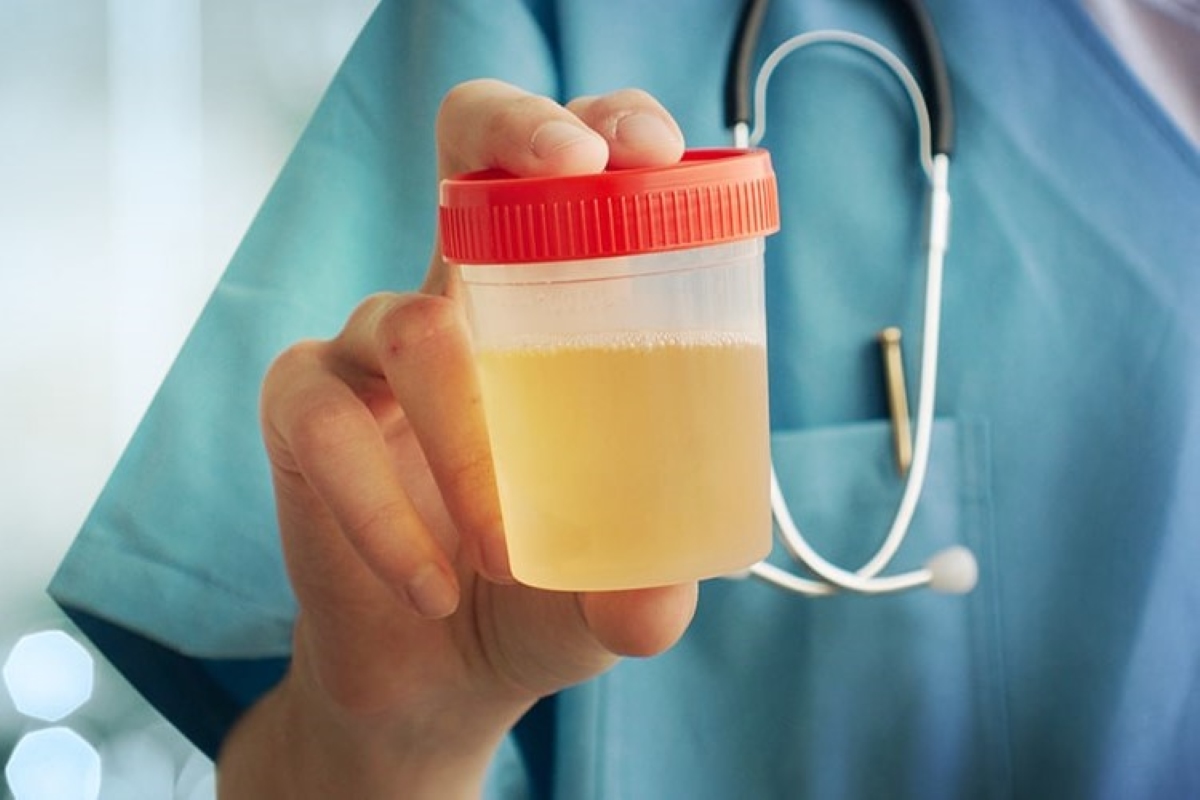


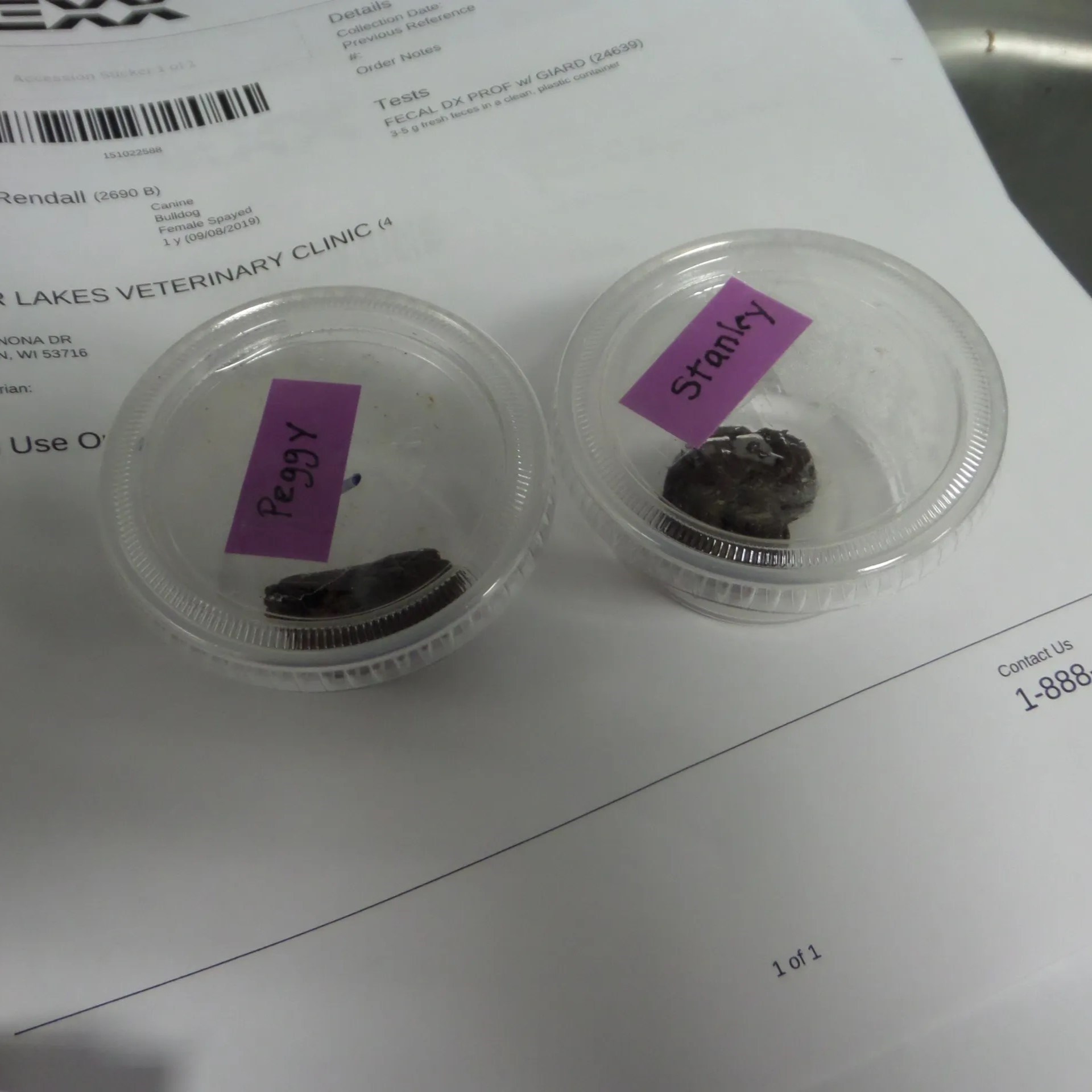

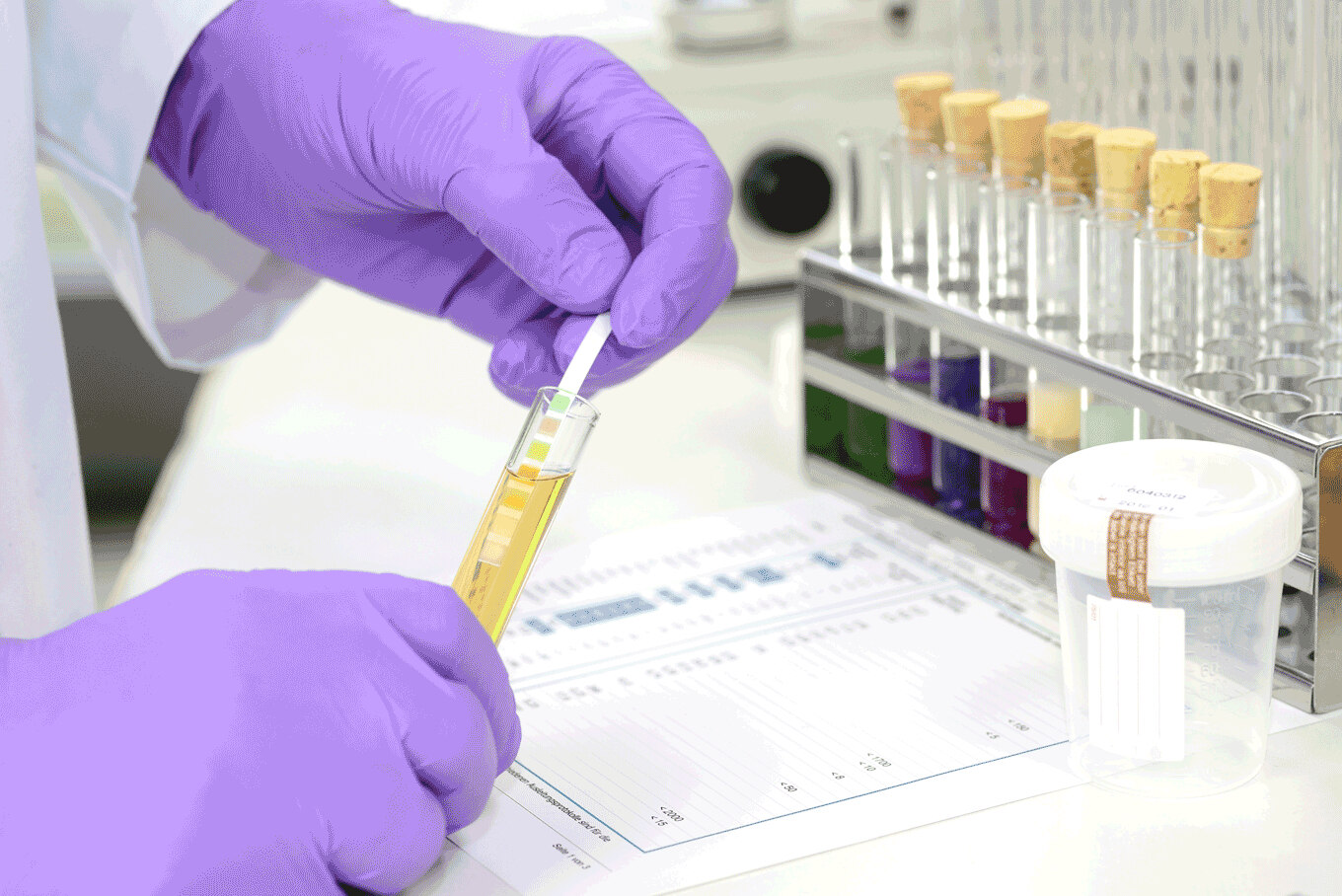
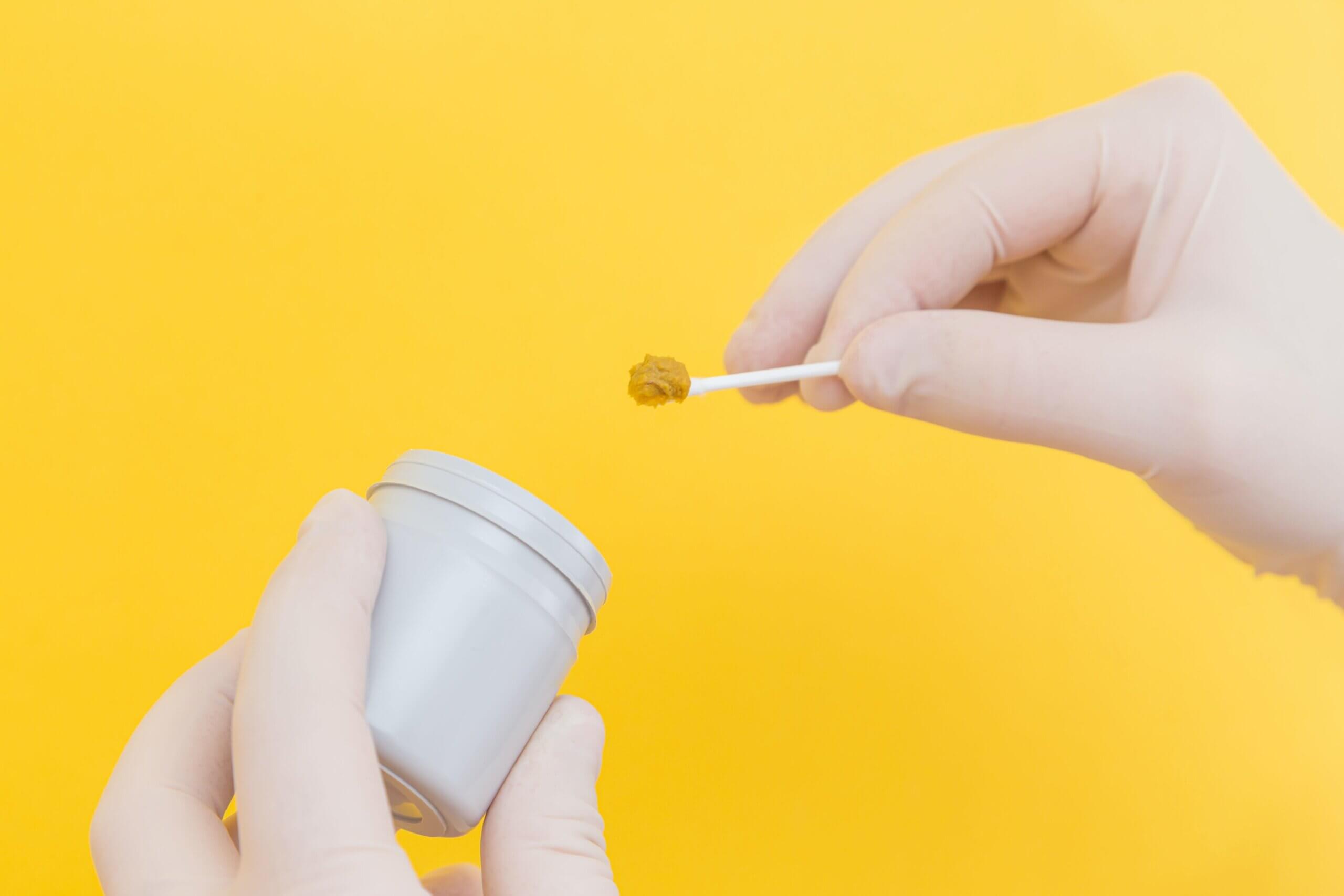
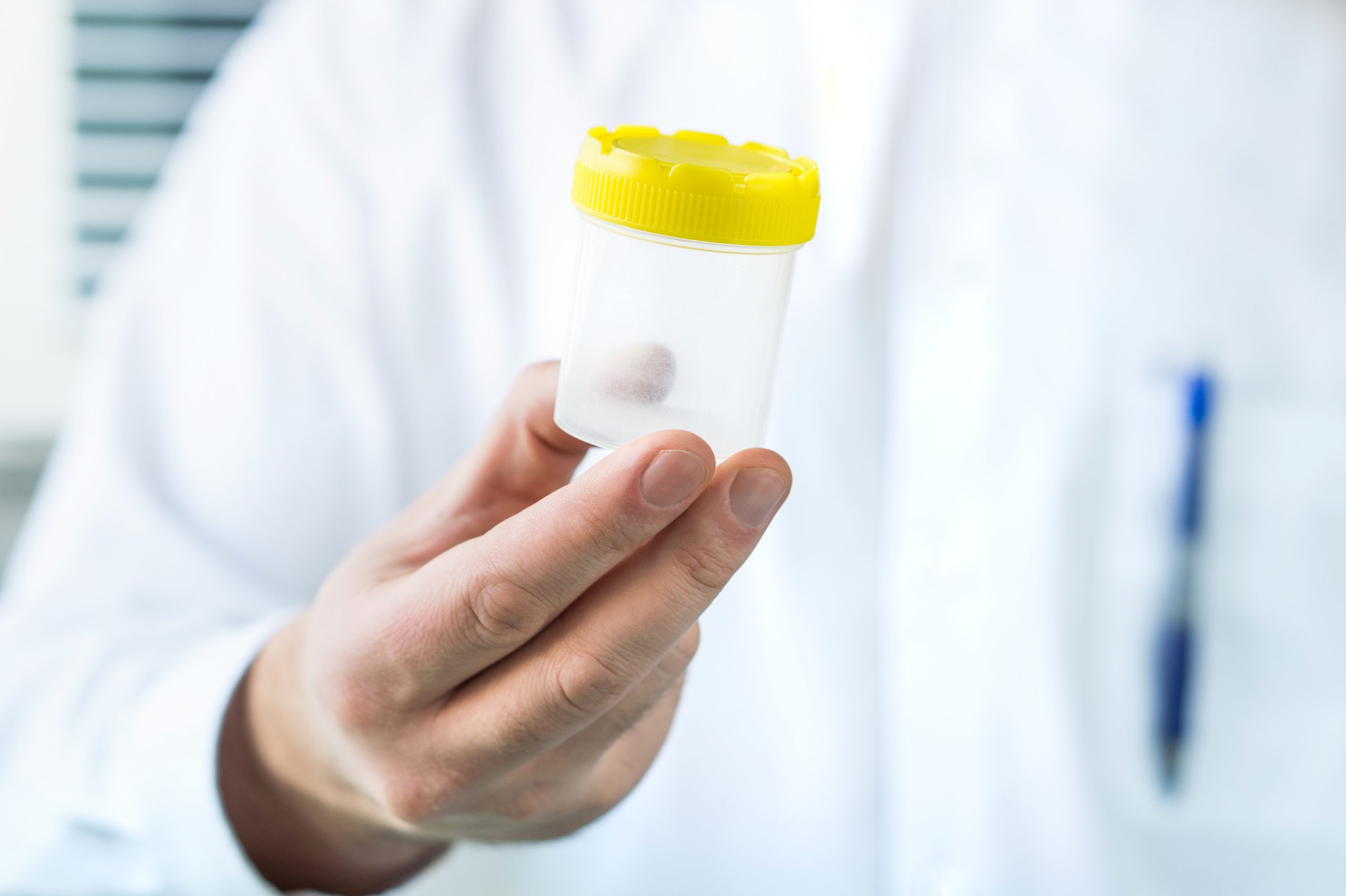





0 thoughts on “How To Store Dna Samples”